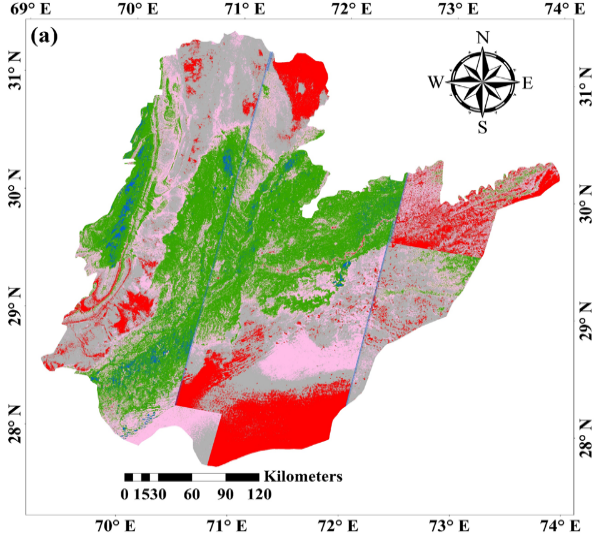QUANTIFYING THE INTERRELATIONSHIP OF SOIL MOISTURE VARIATIONS WITH AGRICULTURAL DROUGHT SEVERITY AND AGRICULTURE YIELD
DOI:
https://doi.org/10.71146/kjmr219Keywords:
Soil Moisture, NDVI, Climate Change, SMADI, NVSWI, Agricultural droughtAbstract
This study investigates the impact of climate-induced soil moisture variation on agriculture in different districts of South Punjab. It analyzes changes in soil moisture, precipitation, and the Normalized Difference Vegetation Index (NDVI) over time. Additionally, it assesses agricultural drought using the Normalized Vegetation Supply Water Index (NVSWI) and Soil Moisture Agriculture Drought Index (SMADI). The study's statistical analysis measures the impact of agricultural drought fluctuations on crop yield spanning from 2007 to 2021. Based on trend analysis on average NDVI and Soil Moisture showed a decreasing trend at most of the stations except Lohdran and Vehari where a slightly increasing trend has been observed. The assessment of SMADI and NVSWI indicated that from 2007 to 2018, dry years had an average value of 2.89 and 35.24 at most stations, while 2019-2021 were spot as wet years, averaging 1.83 and 42.10 for SMADI and NVSWI, respectively. Moreover, the correlation analysis between soil moisture with SMADI, NVSWI, and yield showed that SM had a positive and negative correlation with yield, SMADI, and NVSWI. Based on analysis, it was noted that a decline in soil moisture has triggered the agricultural drought and ultimately has decreased agricultural land as well as yield in South Punjab. Therefore, it is crucial to give serious consideration to reassessing and correcting the factors that lead to soil moisture variation. This should be accompanied by the implementation of an effective irrigation system to ensure the sustainability of agricultural yield and address the issue of food insecurity in South Punjab, Pakistan.
Downloads

Downloads
Published
Issue
Section
License
Copyright (c) 2025 Khawar Abbas, Muhammad Mujahid, Umar Sultan, Muhammad Laraib, Abu Bakar Arshed, Mohsin Raza (Author)

This work is licensed under a Creative Commons Attribution 4.0 International License.






